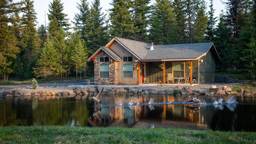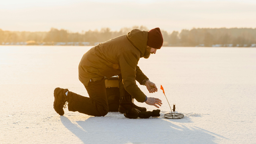
For many of us, the loud buzz and smoky smell of an outboard can cue a hundred pleasant memories of afternoons out on the lake. And while there may be nothing like a familiar and reliable family boat, there are plenty of good reasons to put nostalgia aside and replace its vintage engine.
According to state registrations, more old-school two-stroke engines still power our pleasure boats than the modern direct-injection 2-stroke engines or the four-stroke. The reason is likely upfront costs – the old two-stroke’s simple construction makes them hard to kill and why replace what’s not broken, right? Although modern engines are a bigger initial investment and less DIY-friendly to repair, the environmental cost of old carbureted engines is just too high.
See also Your Spring Boat Check List
Water Quality
It’s hard to argue with better water quality, and that’s just what you’ll get with a four-stroke engine, and to a lesser extent, a newer two-stroke. On a traditional carbureted 2-stroke engine, when the piston engages its down-stroke, the intake and exhaust ports are wide open, allowing a hefty amount of fuel to slide by unburned. That translates into a whopping 20 to 30 percent of fuel lost as it makes its way through the combustion chamber – and is released directly into your favorite fishing spot.
We’ve all seen that guilt-inducing rainbow slick across the water, and while no responsible boater would open up a gas can and pour a couple of gallons directly into the lake, that’s exactly what’s happening for every 10 gallons of fuel used in an old-school 2-stroke motor. And water pollution aside for a moment, that motor is up to a third less efficient, jacking up the boater’s operating costs.
Lower Pollution Alternatives
Fortunately, you need not limit yourself to casting off the dock and foregoing boat trips around the lake. For a price jump of about 10-20 percent over a carbureted two-stroke outboard, you can significantly reduce air emissions by 75 percent, use 35-50 percent less gasoline and even make boating easier on the ears.
The cleanest running marine engine continues to be the four-stroke. It can give you up to 225 horsepower and make mixing gasoline with oil a thing of the past. Like your car, the intake and exhaust valves alternate opening times, which means no unburned fuel will escape into the water.
Two-stroke engines have improved some with the newer direct fuel injection technology. They operate by spraying fuel into the cylinder, but not before covering the exhaust ports on the up-stroke to eliminate the hemorrhaging of gas. The new design also halves the amount of lubricating oil used compared to its old-school counterpart.
Advice for Any Engine
No matter what’s powering your boat, there are some best practices for keeping your sport as green as possible. Always re-fuel on land if possible, and use an automatic stop device on your funnel or spout to prevent overfilling the gas tank.
Next, it’s a small investment to have some oil-absorbent pads on hand. They’re designed to soak up hydrocarbons like gas, diesel and oil, but not water. These sponge-like products come in many shapes and can be placed in the bilge to clean up oil or used as a donut-shaped fuel collar around the nozzle to prevent any drips. Other uses include placing an absorbent pad by the fuel vent to absorb any escaped fuel or floating one at the surface to soak up that telltale rainbow sheen. Prices for absorbent pads start at around $1 and they are reusable. Just wring them out over an oil-recycling receptacle.
How you run your outboard makes a difference, too. First off, save your ears and the environment by eliminating needless idling of the engine. As simple as it sounds, if you’re not moving the boat, turn the engine off.
Also remember the engine runs least efficiently at top speeds, so you may want to save those full-open throttle moments for when you really need to get your craft out of harm’s way and not as a routine method of crossing the lake.










